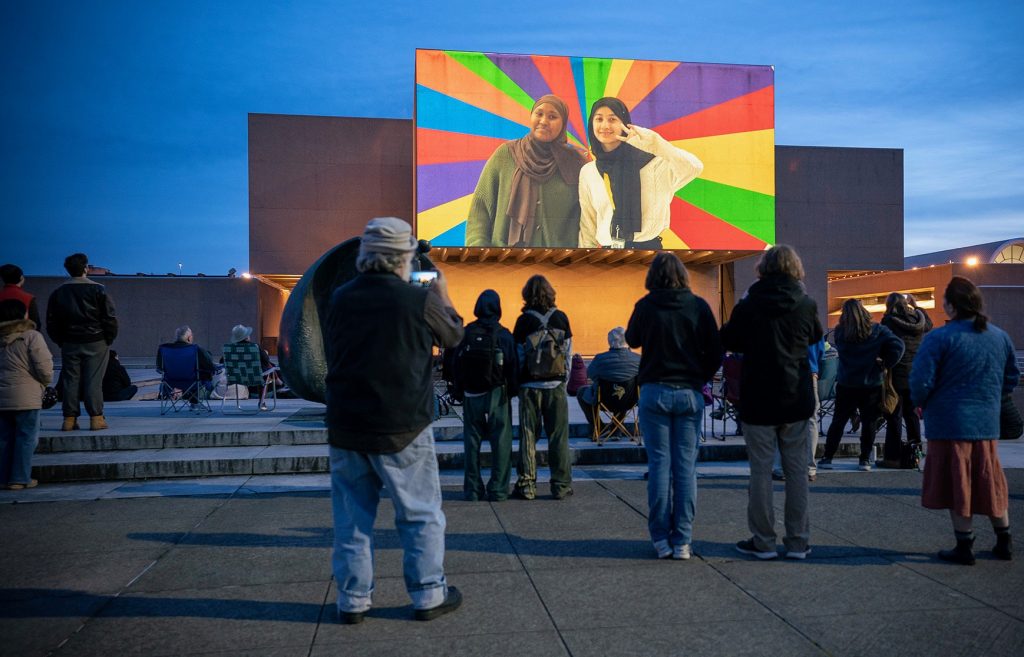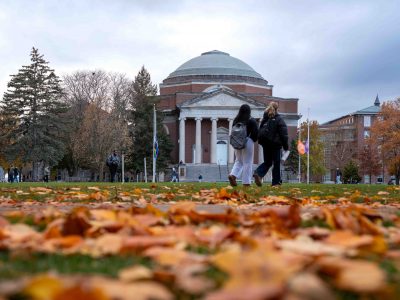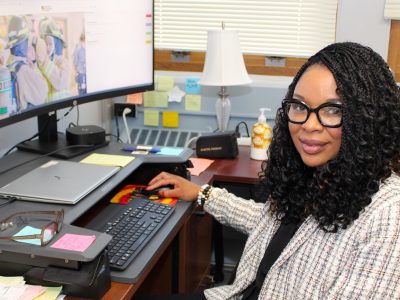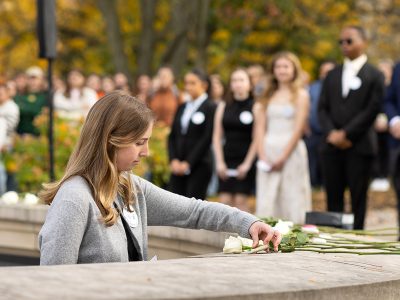For Many Graduate Students, Community-Engaged Scholarship Gives Extra Meaning to the Educational Experience
Graduate-level learning, research and creative activities take place in classrooms, labs and studios on the Syracuse University campus, but they also occur throughout the community as graduate students work with local residents of all ages and backgrounds through partnerships with a variety of local organizations.
The Mary Ann Shaw Center for Public and Community Service and the Engaged Humanities Network (EHN) in the College of Arts and Sciences are two campus resources that help graduate students find volunteer opportunities and carry out community-based research initiatives.
The Shaw Center is the University’s hub for experiential learning, matching student volunteers with community needs. Administrative coordinator Kathryn Bradford says volunteers work at the University’s La Casita Cultural Center and other community locations, including the North Side Learning Center, Refugee and Immigrant Self-Empowerment, We Rise Above the Streets Recovery Outreach Inc. and Syracuse City School District (SCSD) schools.
EHN annual research assistantships and summer and winter fellowships provide arts and humanities research opportunities that align with graduate scholarship, coursework and community-building. About 35 graduate students are currently involved across a range of programs, says Brice Nordquist, EHN founder and director.
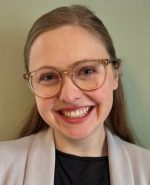
Lauren Ashby, a Ph.D. student in sociology, works with Data Warriors, a club at SCSD’s Nottingham High School that uses math and mapping to advance social justice and address local issues. She previously ran a summer research program for SCSD students on geographic information systems (technology that creates, analyzes and plots data to a map).
The community engagement and participatory research Ashby’s EHN-associated projects provide are important to her research, which looks at educational segregation and inequality, she says. “I have been able to work with incredible high school students who want to make real change in their communities. I’m diving right into what I am passionate about and I share that beyond academic spaces. Partnering with students pushes scholarship in new directions and provides new insights,” she says.
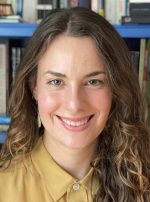
Lauren Cooper, a Ph.D. candidate in English, specializes in the climate history of the Romantic period and its relationship to Romantic literature. She works mainly with first-generation immigrants, new Americans and other traditionally underserved populations. Through her work with Write Out, she has helped area youth share their stories while also enjoying literature. Her “Ecologies of Writing” project, she partnered with Environmental Storytelling Central New York to offer students a way to respond to human-induced environmental and climate change.
Community-engaged projects provide a needed real-world lens to balance climate crisis and environmental justice questions against the literary responses to those issues, Cooper says. “Engaged humanities work provides a really valuable mode of making sure we’re centering questions and voices grounded in our contemporary moment and the community around us, even as we conduct specialized research,” she says.
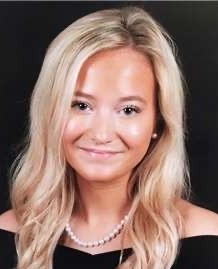
Caroline Dollar, a master’s student in public administration in the Maxwell School of Citizenship and Public Affairs, started reading with kindergarteners and second graders at SCSD’s Delaware Primary School through the United Way of Central New York’s Book Buddies program. She travels to and from the school using Shaw Center transportation.
Learning about some of the challenges many SCSD children face, Dollar felt moved to help address them, she says. “I love to read, and I enjoy sharing that love with the students, so I decided to get involved with the community. I honestly just feel good about spending a little bit of my time each week giving back and connecting with the kids.”
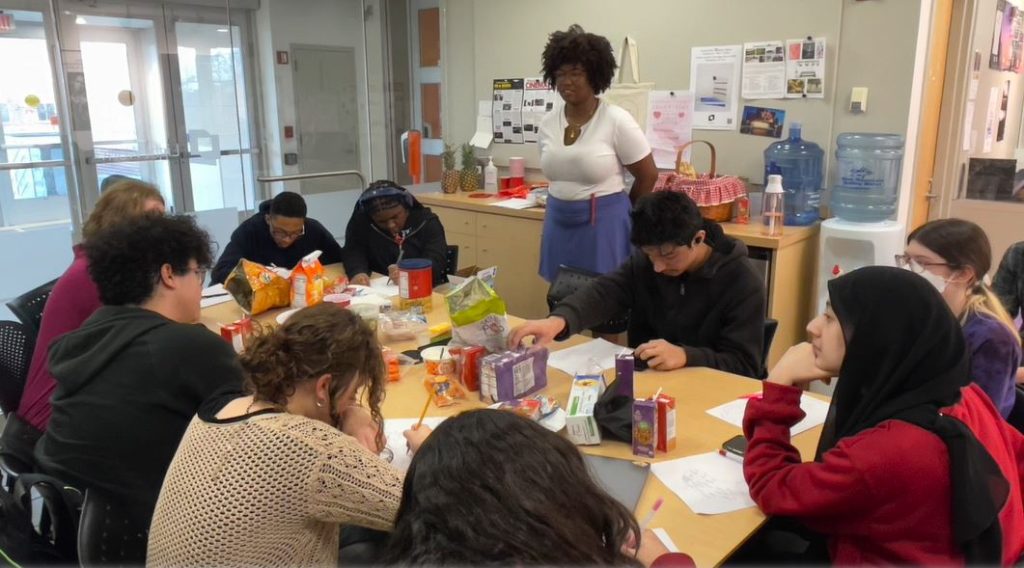
Monae Kyhara, a master’s film student in the College of Visual and Performing Arts (VPA), helped pilot a filmmaking workshop, “Teens with a Movie Camera.” She worked with Evan Bode G’23, a VPA film and media arts graduate who is now a VPA instructor.
The project encouraged teens to use their smartphones as an artistic instrument and a form of self-expression.
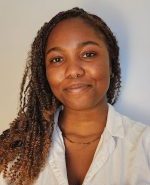
The experience was an enlightening and rewarding one, she says. “It allowed us to expand artist conversations with young artists and was an opportunity for both parties to learn from each other and grow in our love of the arts through pedagogy and practice.
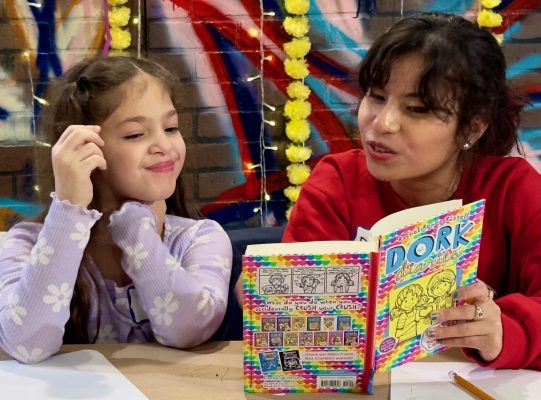
Hosting Shaw Center weekly story times at La Casita Cultural Center helped Diana Varo Lucero, a master’s multimedia, photography and design student in the Newhouse School of Public Communications, stay connected to her community. She is producing a documentary for her master’s project.
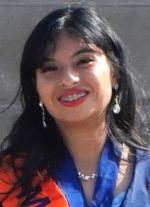
“I chose to volunteer because part of my values as a storyteller and a creative is to use my platform to give back to my community and provide a space for other people to tell their stories,” Lucero says. “I think that to create impact, we must actively become involved with our communities. La Casita has given me the space to learn and become involved. I have met welcoming people, built a supportive community and have discovered my ability to work with different age groups. I’m also still able to work towards contributing to local communities.”
